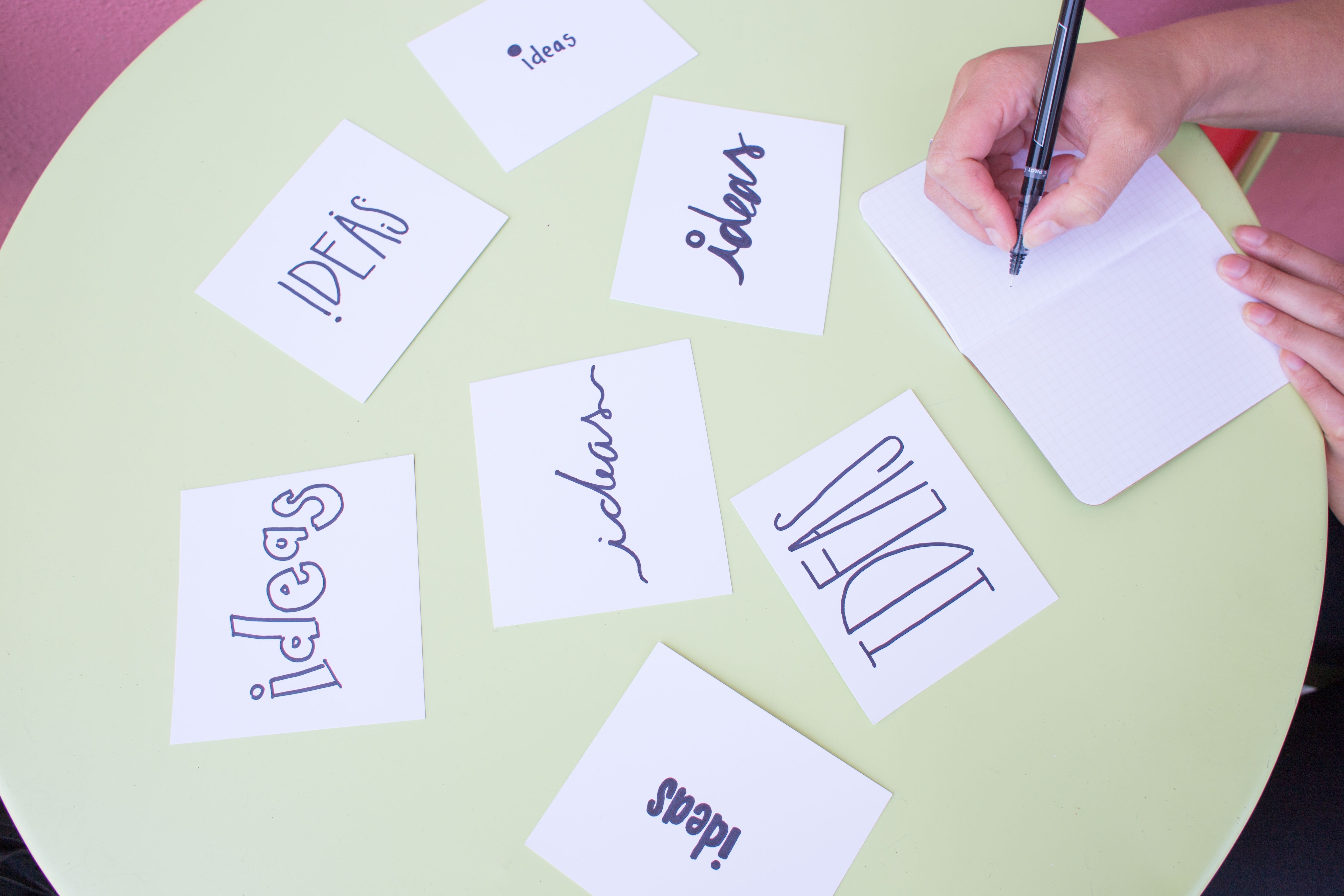How to Brainstorm
Imagine that every time you try to write, you have two creatures perched on your shoulders—not an angel and a devil, but a fat, drunken muse and a scowling, shriveled-up editor.
The muse is bubbling over with ideas. “Write about your trip to Fiji!” she shouts happily.
“Grumble grumble grumble,” grumbles the editor. “I say, what a foolish idea.” You must imagine him with an English accent.
“Write about Aunt Helga!” sings the muse, swaying a little on your shoulder. “Write about the babysitter who taught you origami!”
“Piffle,” grumbles the editor. “Malarkey. Balderdash. Blarney.”
“Write about the Constitution!” sings the muse. “Write about your collection of sea shells! Write about cheetahs! Cheetahs are amazing!”
“Grumble grumble grumble,” grumbles the editor. “Your brains are made of garbage.”
Later on, you’ll find the editor useful. But right now, your job is tie him up and gag him.
We brainstorm to generate ideas, and you’ll only get to the good ones by producing a lot of bad ones. Try to short-circuit your critical facilities. Give your creativity free rein. Don’t dwell on potential problems; just fill up your screen or notebook with possibilities.
Below, you’ll find some more specific tips and techniques for brainstorming. You don’t have to use all of them. Pick the ones that seem useful.
Don’t let your pen stop moving for five minutes.
This is sometimes called free writing or automatic writing. The idea is to build up momentum and keep it going. Your hand should be racing to keep up with your brain, which is why it’s important to write freehand. Set a timer, and don’t stop writing until it rings, even if you’re only writing “blah, blah, blah, blah I don’t know what to write next.” Have faith that something will come to you.
Blindfold yourself or cover your computer screen.
Sometimes seeing your words can be inhibiting. Try writing blind.
Take a long walk or a shower.
Sometimes you have to come at a problem sideways. The trick is to partly distract yourself, so your subconscious kicks in. Try anything that you find both relaxing and a little bit boring: walking, jogging, cooking, etc. Do not bring or use your phone.
Sleep on it.
Don’t expect to generate all your best ideas in one session.
Dictate into your phone.
Some people find it easier to express themselves out loud. Brainstorming is about what you’re going to say, not how you’re going to say it, and by dictating, you can eliminate your anxiety about the how.
Talk your ideas out with someone else.
This is helpful for the same reason that dictating is helpful, with an extra benefit: your friend can ask you questions and push you in new directions.
Do a Q&A with yourself.
A self-Q&A can help you break bigger questions into smaller, more manageable questions. Say you’re brainstorming essay topics about teachers. You might proceed like this:
What classes do I even remember?
For some reason I remember Dr. Brill’s class.
Why do I remember Dr. Brill’s class?
Because he taught me to stay organized, and because he had no eyebrows.
How have I used that lesson?
When I was figuring out what to do after I graduated, I used his “buckets” system to group my ideas. I still have eyebrows, though.
Learn about our admissions consulting and editing services.
Click here to reset

Leave a Reply
You must be logged in to post a comment. You can get a free account here.